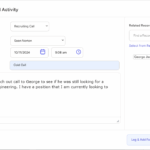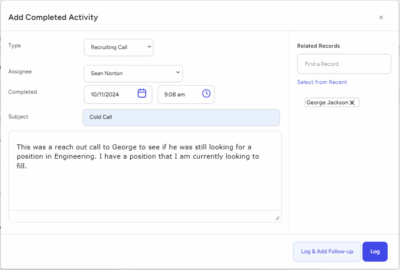Every recruiter knows the pain of a candidate declining a job offer. And during this current candidates’ market, it’s been happening with more frequency. The longer this candidates’ market continues and the more scarce top talent becomes, the more that candidates will decline employment offers.
Why candidates decline the offer
There are many reasons why candidates are declining job offers left and right. They include the following:
- The compensation is too low.
- The candidate did not like what they saw during the hiring process.
- The candidate did not feel wanted by your client.
- The candidate did not see a clear career path.
- The candidate did not like the company culture.
- The client’s core values did not align with the candidate’s core values.
But wait, there’s more! There are more reasons why a candidate would decline a job offer, that is. First, they might have decided to accept a counter-offer from their former employer. Companies and organizations have been making more counter-offers in this market, as well. Second, the candidate might have decided to accept an offer made by another employer.
After all, this candidate could be interviewing with more than one company. And if that’s the case, then the candidate could conceivably receive more than one offer. And if they receive an offer from another employer and decide that offer is better, then they’re going to rebuff your client. So no placement for you, and more importantly, no placement fee for you. The horror.
How to stop candidates from declining a job
As a recruiter, there are steps you can take to reduce the likelihood that a candidate will decline your client’s job opportunity. To discover these steps, we’re going to draw upon the wisdom of recruiting industry trainer Jon Bartos of Revenue Performance Management. Bartos is a premier writer, speaker, and consultant on all aspects of personal performance, human capital, and the analytics behind them.
According to Bartos, there are five main ways to prevent candidates from declining a job offer:
#1. Truly get to know your candidate.
Don’t be in such a rush to fill a job order that you skip the crucial step of getting to know your candidate. Instead of querying your recruiting software and completing a rough candidate data sheet and quickly submitting them for a position, slow down. Take the time to understand what your candidates like and dislike about their current job and employer. Ask what they would change about their situation. Gain an understanding of their personal life: hobbies, recreational activities, their spouse and children, what they would like to do more of. Try to find out everything you can about their personal and professional priorities because a career move is not just about the candidate—it’s about anyone in their circle that will be impacted by the change. Today’s candidates value work-life balance, and you need to understand how a career move can affect that balance.
Dig in. Find out the real reason behind the desire for a change; it’s usually not money. Finally, understand your candidates’ dream job. What is their ideal job, the perfect next move in their career? Only then can you be more than just a recruiter. You’re a talent scout, looking out for the best interest of your clients. You’ll know what makes them tick, why they’re ready for a job change, and what they want next in their careers. When you develop this level of professional relationship with candidates, you increase your odds of a successful placement and decrease the chances of candidates declining your clients’ job offers.
#2. Encourage candidates to ask current employers for changes.
It may sound like you’re helping the opposing team, but it works. Once you understand a candidate’s motivation for a job change, encourage them to ask their employer to accommodate their needs. The vast majority of the time, our candidates won’t do this. But it’s a great way to flush out other areas of professional dissatisfaction to help the candidate really commit to the idea of a job change. “Since you’re unhappy with the overtime hours and all of the excessive travel, why don’t you just ask your boss to be flexible and give you more time to be at your daughter’s softball practice?”
The best time to get the candidate out of the process is during the first conversation. Once the candidate actually attempts to resign, the hiring manager will likely make an effort to change the situation that’s causing the employee to look for another job. Never go forward with a candidate unless they have a good reason for considering a new position or they go to their employer to ask for changes in their current situation. Let them know that you don’t want to waste your time searching for the ideal position unless they’re really ready to make a change. Make them prove it to you.
#3. Get a verbal agreement about a potential job change.
Eliminate gray areas by attaining a verbal agreement from any candidate about their commitment to a career move. Get confirmation that once you’ve found the right position, one that fills the void their current position does not, one that is a desirable next step on their career path, they will act. Candidates need to say it. By verbalizing this commitment to change, it becomes a reality. Avoid working with candidates who are too unrealistic. If they say, “If you find me the perfect job that fits every criteria I am looking for, then I’ll make a job change.” Perfect will never come. The key to getting a verbal commitment is to take a few of the major motivating points for making a change and fulfill them. Once you have it, it’s time to discuss roles in the process and set expectations.
#4. Establish roles and set expectations.
One of the most important steps in the recruiting process is to establish roles and set expectations. Like any relationship, the recruiter/candidate one needs ground rules to thrive. Clearly define how you will work together. Many recruiters don’t. And then they wonder why phone calls are never returned and feedback isn’t given. A great way to begin a relationship is to explain your role in the recruiting process: a professional job description. It is a powerful tool for a recruiter.
“My role is to become your talent agent. I will present you to new teams that have opportunities that are a potential fit to your background. I will find companies that meet your requirements for the next best step in your career. I will present you in a positive manner, work to get interviews set up, and take care of all the details in between. I will also prepare you before interviews. I’ll discuss with you the hiring manager, the company, and the job description, including what is expected of a successful candidate. I will debrief you after interviews and openly and honestly address any concerns the company might have. Before the final interview, I will help to negotiate a strong compensation and benefits package so it will be a win-win situation. I will walk you through the resignation process and cover the counteroffer. After you join the new team, I will follow up with you on your first day, after two weeks, and after 30 days. If at any time you have any issue, no matter how small, we will work together to resolve it. I want to be a partner in your success—your talent agent for the rest of your career.
“You have a significant role in this process, as well. You need to be as flexible as possible with your schedule for interviews and time to talk with me. You have my total commitment to openness and honesty at every stage of this process, and I need nothing less from you. If you have any questions or concerns, it is imperative that you bring them to my attention immediately. If at any time in this process your interest level wanes, let me know. If you are considering another opportunity, let me know. In order for us to reach a successful conclusion, we need to be able to work closely together and to trust one another completely.”
It’s also important to set expectations on preferred communication methods and times, as well as an expected time frame to return calls. Be firm. Discuss the ramifications of not honoring the ground rules. Let candidates know that they can and will be dropped from the process if they don’t play fair.
#5. Get their “skin in the game.”
The more skin in the game, the better chance you have of winning. It all starts by getting the candidate’s commitment up front to a new opportunity. From being flexible in scheduling time to talk with you, to sending a resume on time, to updating a resume to highlight the most recent relevant experience, it all amounts to “skin in the game.” I like to have candidates send me an email explaining why they are a perfect fit professionally and personally for the opportunity. I try to have candidates do something for the hiring manager or me all through the process—from providing a list of researched competitors to a 90-day business plan of what they would do if they got the job. This keeps the candidate deeply involved in the process and encourages their commitment going forward.
Recruiters can minimize candidates declining their clients’ job offers. However, it requires a strategic approach and a willingness on the part of the recruiter to execute that approach during the placement process.
Candidates keep declining employment offers? Try training!
Top Echelon offers a free monthly webinar as part of its Recruiter Coaching Series. After the webinars are over, we post the recorded version of the webinars in our Recruiter Training Library. These webinars touch upon a variety of recruiter-related topics. These topics deal with both candidates and clients. As always, our goal with these webinars (and corresponding videos) is to help recruiters make more placements.
Not only does Jon Bartos have multiple videos in the Top Echelon Recruiter Training Library, but there are other videos, as well. Some of this training videos deal with candidates during the hiring process. These videos are listed below. Click on the title of each video for access:
- “Establishing Influence with Today’s Candidates” by Doug Beabout
- “Capturing Candidate Loyalty: Three Ways to Keep Hot Candidates” by Scott Love
- “8 Steps for Recruiting Candidates You Can PLACE” by Bob Marshall
In addition to training and webinars, Top Echelon offers other recruitment solutions. These solutions include the following:
- Big Biller recruitment software
- Top Echelon split fee recruiting network
For more information about Top Echelon and the products and services that it offers, visit the Top Echelon website by clicking here.








